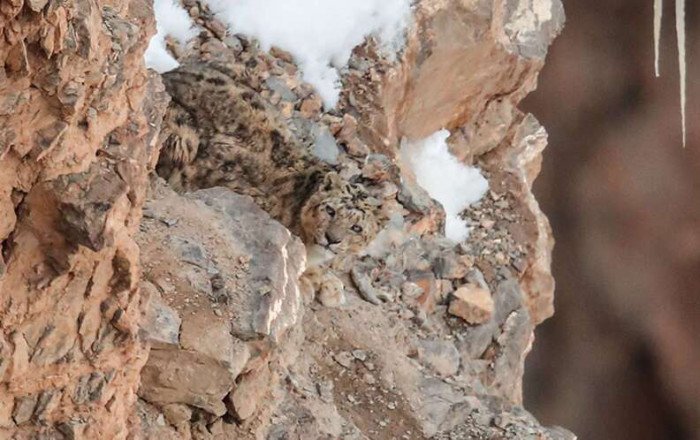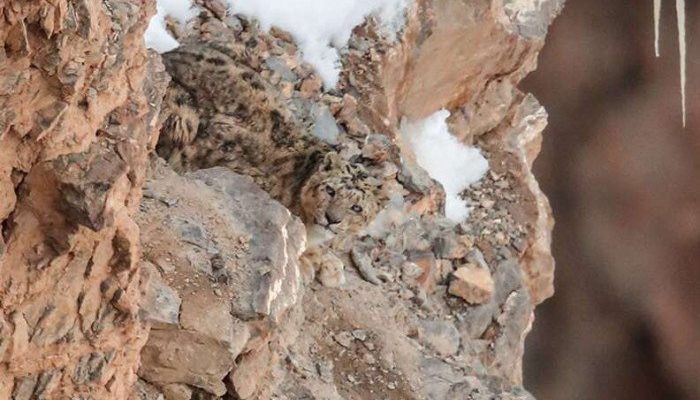
Snow leopards, often called “ghosts of the mountains,” are known for their solitary nature and incredible adaptations to cold climates. Despite their charm, many people don’t fully understand their behavior, habitat, or conservation needs. Here’s the thing: clearing up these misunderstandings isn’t just about satisfying curiosity; it also plays a significant role in how we can better protect these incredible animals and their habitats. Let’s dive into some of the most common myths about snow leopards.
Myth 1: Snow Leopards Are Found in Snowy Areas All Year Round
You might think that since these cats are called snow leopards, they’d only thrive in snowy environments. While they do prefer mountainous regions with plenty of snow, their habitat varies greatly. Snow leopards can be found across Central and South Asia, from the rugged mountains of the Himalayas to the rocky terrain of the Tibetan Plateau. They often roam at elevations between 9,800 to 14,800 feet, where the climate is cold and dry.
These big cats are not just about snow. In summer, when the snow melts, they adapt by moving to higher elevations where temperatures stay cooler. So, when you picture a snow leopard, don’t just envision it lounging around in the snow; think of it as a versatile creature able to withstand varying landscapes and weather conditions.
Why This Matters
Understanding that snow leopards live in diverse environments helps conservationists design effective strategies to protect their habitats. If we only focus on snowy landscapes, we might miss crucial areas that need attention.
Myth 2: Snow Leopards Are Fierce Killers
Another misconception is that snow leopards are relentless predators, much like their larger cousins, the tigers and lions. While snow leopards are indeed formidable hunters, they’re not the fierce brutes many imagine. In reality, they primarily prey on animals like mountain goats and sheep, using their agility and stealth to stalk and ambush.
Think about it this way: instead of charging into battle, snow leopards are more like stealthy ninjas of the mountains. They use their keen eyesight and incredible jumping ability—up to 50 feet in a single leap—to get the drop on their prey. This hunting style requires a significant amount of energy, so they often eat large meals, which can sustain them for several days.
Understanding Their Role in the Ecosystem
Snow leopards play a critical role in their ecosystem by controlling prey populations. By understanding their behavior as stealthy hunters rather than fierce killers, we can appreciate their importance in maintaining ecological balance in their mountain habitats.
Myth 3: Snow Leopards and Domestic Cats Are the Same
You might be thinking, “Aren’t snow leopards just big cats?” While they do belong to the same family as domestic cats, they are much more than oversized house pets. Snow leopards are part of the large cat family, known scientifically as Panthera uncia, and have unique adaptations suited for their harsh mountainous habitats.
For starters, snow leopards have thick, plush fur that keeps them warm in freezing temperatures, and their large, furry paws act like natural snowshoes, helping them navigate snowy terrains. Unlike cats that enjoy cozy indoor lives, snow leopards are solitary and territorial animals that roam vast distances—sometimes up to 30 square miles—in search of food and mates.
Why This Distinction Matters
Recognizing the differences between snow leopards and domestic cats helps raise awareness about their specific conservation needs. Unlike house cats, snow leopards face threats from climate change, habitat loss, and poaching, which require tailored conservation efforts.
Myth 4: Snow Leopards Are Dangerous to Humans
You may wonder if snow leopards pose a threat to humans. Thankfully, the answer is a resounding “no!” These elusive creatures are inherently shy and prefer to avoid human interaction. In fact, it’s quite rare to spot one in the wild, and they usually retreat at the first sign of human presence.
While they are capable hunters, snow leopards are not interested in attacking people. Their primary concern is survival in their rugged, mountainous environments. Most incidents of conflict arise from livestock predation, which can lead to retaliation from local herders.
Understanding Human-Snow Leopard Conflict
Addressing human-snow leopard conflict through community education and sustainable practices is key to protecting both the cats and the livelihoods of local people. By emphasizing coexistence rather than conflict, we can enhance conservation efforts.
Myth 5: Snow Leopards Are Not Endangered
It may come as a surprise, but snow leopards are classified as vulnerable by the International Union for Conservation of Nature (IUCN). With an estimated population of only 4,000 to 6,500 left in the wild, they face numerous threats, including habitat loss and poaching for their beautiful fur.
Despite their elusive nature, these big cats are incredibly important for biodiversity. Their declining numbers are a clear signal that their ecosystems are in trouble. Understanding their status as endangered animals is crucial for ongoing conservation efforts and ensures that they remain a part of our world for generations to come.
What You Can Do to Help
You don’t have to be a wildlife expert to make a difference! Supporting conservation organizations, spreading awareness, and even just talking about snow leopards can help shine a light on their plight. Every bit counts!
Final Thoughts
Snow leopards are fascinating creatures that deserve our respect and protection. By addressing common myths and misconceptions about them, we take steps toward better understanding and safeguarding these remarkable big cats. Remember, the next time you hear about snow leopards, think about the “ghosts of the mountains” and the complexities of their lives. Let’s work together to ensure their future!

